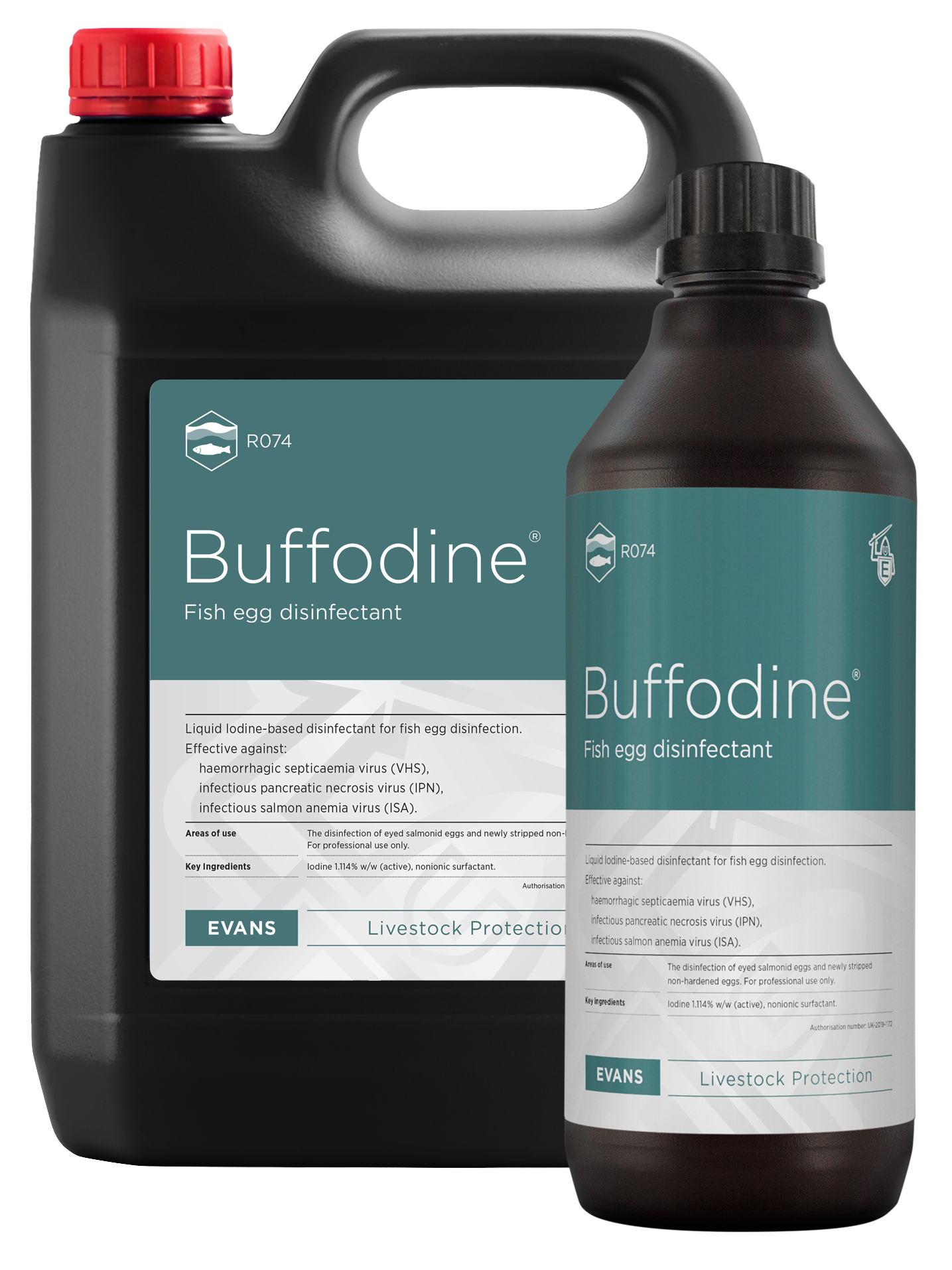Chemical Fish Egg Disinfection in Europe – Evans Vanondine\’s \’Buffodine\’

Chemical Fish Egg Disinfection in Europe
For many years the fish production industry has used chemical fish egg disinfectants at the hatchery stage. The objective is to improve hatchability through the destruction of disease-causing microorganisms on the outer coating of the egg, without damaging the egg itself.
This itself is a tall order since all disinfectants are designed to kill living cells, and the mode of action is unlike medicinal treatments which are targeted. Disinfectants have general modes of action and cannot be focused specifically on problem causing viruses or bacteria. Many are designed to kill extremely tough and resistant organisms and consequently are not environmentally friendly. The selection of the correct disinfectant active material in aquaculture and the formulation of the product is therefore critical if high mortality and poor biodegradability caused by the disinfectant is to be avoided.
In the 1970s, buffered iodine disinfectants, such as UK manufacturer Evans Vanodine’s ‘Buffodine’, were invented. These were specifically designed to halt vertical transmission of viruses such as IPN on the outer membrane of the eggs of salmonid species, without penetration or damage to the eggs. Buffodine was the first of this disinfectant type to be developed and was patented, and since then this class of product has been largely used for egg disinfection by salmonid and other marine species producers around the world. The product displays effectiveness on a wide range of marine species, including shellfish, to prevent infection.
However, the use of these disinfectants has, with a few exceptions, not been controlled by regulation and although very effective in providing low levels of mortality in broodstock and high hatchability, these products have largely escaped regulatory oversight.
This has now changed. In Europe the use of all disinfectants is now controlled by the EU Biocidal Products Regulation (EU 528/2012). This regulation, which applies to all EU member states – and to other countries like Norway which have adopted the regulation, first evaluates the disinfectant actives which are the core of the disinfectant and authorises them, or not in some cases, out of an original 550 actives, only 128 have been accepted for submission on safety or environmental grounds.
Following authorisation, any manufacturer who uses this active material in their products has a limited time to submit a product dossier to an EU authority for authorisation as a finished disinfectant product. If this finished product authorisation is given, the manufacturer must then apply for Mutual Recognition of the authorisation in any Member States in which they wish to sell the product.
It is a long, complicated and very expensive process, with the objective of standardising the use and effectiveness of disinfectants across Europe, thereby preventing hazardous or environmentally unsafe compounds from being used. It has proved however to be highly anticompetitive in its consequences.
Iodine based disinfectants were the first active family to be authorised by The European Chemicals Agency (ECHA) and disinfectant formulations based on this compound have now been submitted and authorised by the Member States.
Unfortunately, the high cost and technical demands of submitting biocidal dossiers to the EU in support of a specialist egg disinfection product has caused most, if not all of the other European manufactures of this class of disinfectant to withdraw their products from use. It appears that Evans Vanodine’s product Buffodine, which has been submitted and authorised, is now the only BPR authorised iodine-based fish egg disinfectant on sale in Europe.
The cost of this authorisation to Evans Vanodine for this single product is in excess of €100,000 and has taken four years to achieve regulated status.
Evans Vanodine is developing a European multi-language label for its Buffodine product and is currently advertising heavily to make the industry aware of the continued availability of this proven, tried and tested aquaculture egg disinfectant in the event that a hatchery should suddenly find their usual product unavailable and off the market.
Further information and distribution opportunities are available.
Please contact export@evansvanodine.co.uk.

